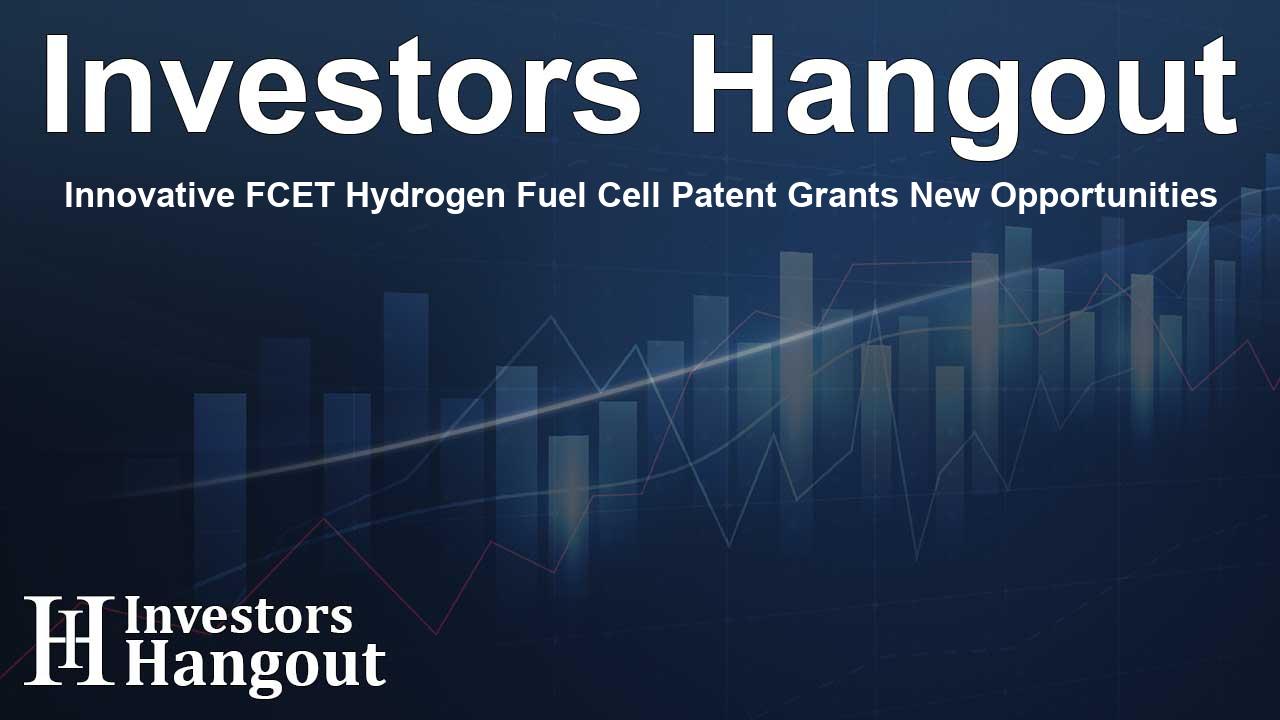Innovative FCET Hydrogen Fuel Cell Patent Grants New Opportunities

Groundbreaking Patent for Hydrogen Fuel Cell by FCET
FCET, Inc. is proud to announce the granting of U.S. Patent No. 12,071,697 for its innovative "Low Temperature Electrolytes for Solid Oxide Cells Having High Ionic Conductivity." This patent represents a significant achievement in the realm of hydrogen fuel cell technologies, marking the ninth patent awarded to FCET for its revolutionary work in this area.
Collaboration with UT-Battelle
In a strategic collaboration, FCET teamed up with UT-Battelle, LLC, which manages the Oak Ridge National Laboratory under the U.S. Department of Energy. This partnership highlights the commitment of both organizations to push the boundaries of energy technology and solid oxide fuel cells (SOFC).
Expectations for Future Patents
Looking ahead, FCET anticipates receiving a European patent that will further cement its position as a leader in hydrogen fuel cell innovation. The company also holds two patents in Canada, showcasing its international reach and dedication to advancing fuel cell technologies worldwide.
About FCET and Its SOFC Technology
At the heart of FCET's innovation is a new type of solid oxide fuel cell featuring an ultra-thin electrolyte layer. The electrolyte, measured in nanometers—essentially billionths of a meter—allows the SOFC to operate more efficiently and at lower temperatures compared to traditional fuel cells with thicker electrolytes.
Benefits of the Thin Electrolyte
Typical SOFCs operate at high temperatures, frequently reaching up to 1000 degrees Celsius (1,832 degrees Fahrenheit). However, FCET's unique design enables their SOFCs to function effectively at temperatures between 500 to 600 degrees Celsius. This reduction in operational temperature represents a major leap in technology, with potential future refinements allowing the systems to run at even lower temperatures.
Performance Advantages
The development of FCET's hydrogen fuel cells promises considerable advantages, including enhanced efficiency and reduced energy consumption. Such improvements not only position FCET at the forefront of energy solutions but also contribute to broader sustainability goals in the energy sector.
Contact Information
For inquiries about this innovative technology, contact:
Paul Fisher, CEO
330.730.8750
Brian Long, Vice President
804.241.5297
Frequently Asked Questions
What is the recent patent granted to FCET?
FCET was granted U.S. Patent No. 12,071,697 for low temperature electrolytes in solid oxide fuel cells.
How many patents does FCET have?
FCET has received nine U.S. patents for its innovative work in hydrogen fuel cell technology.
Who is FCET collaborating with?
FCET is partnering with UT-Battelle, LLC, which operates the Oak Ridge National Laboratory.
What temperature range can FCET's SOFC operate in?
FCET's solid oxide fuel cells can operate effectively between 500 to 600 degrees Celsius.
What are the benefits of FCET's fuel cell technology?
The technology offers improved efficiency and lower operational temperatures compared to traditional solid oxide fuel cells.
About Investors Hangout
Investors Hangout is a leading online stock forum for financial discussion and learning, offering a wide range of free tools and resources. It draws in traders of all levels, who exchange market knowledge, investigate trading tactics, and keep an eye on industry developments in real time. Featuring financial articles, stock message boards, quotes, charts, company profiles, and live news updates. Through cooperative learning and a wealth of informational resources, it helps users from novices creating their first portfolios to experts honing their techniques. Join Investors Hangout today: https://investorshangout.com/
Disclaimer: The content of this article is solely for general informational purposes only; it does not represent legal, financial, or investment advice. Investors Hangout does not offer financial advice; the author is not a licensed financial advisor. Consult a qualified advisor before making any financial or investment decisions based on this article. The author's interpretation of publicly available data shapes the opinions presented here; as a result, they should not be taken as advice to purchase, sell, or hold any securities mentioned or any other investments. The author does not guarantee the accuracy, completeness, or timeliness of any material, providing it "as is." Information and market conditions may change; past performance is not indicative of future outcomes. If any of the material offered here is inaccurate, please contact us for corrections.